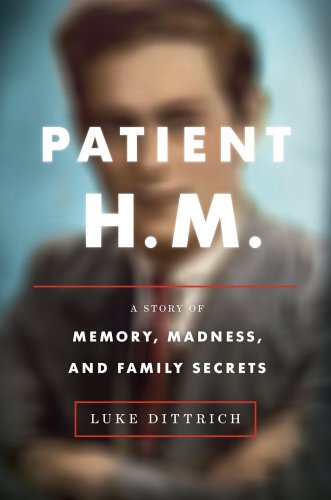
Patient H.M.
A Story of Memory, Madness, and Family Secrets
داستان حافظه، دیوانگی و اسرار خانوادگی
کتاب های مرتبط
- اطلاعات
- نقد و بررسی
- دیدگاه کاربران
نقد و بررسی

Starred review from June 6, 2016
In this courageous mix of scientific investigation and memoir, journalist Dittrich recounts the life of Henry Molaison (1926–2008), an epileptic man hailed by many as the most important human research subject in the history of neuroscience. A 1953 operation by Yale neurosurgeon William Beecher Scoville (1906–1984), Dittrich’s grandfather, on Molaison’s hippocampus left the 27-year-old without memory, in a world where “every day is alone in itself.” The story of “what led my grandfather to make those devastating, enlightening cuts,” Dittrich writes, “is a dark one, full of the sort of emotional and physical pain, and fierce desires, that Patient H.M. himself couldn’t experience.” And he unravels it by documenting the decades-long studies Molaison’s extraordinary amnesia spawned and the researchers he would inspire and confound. Those threads are woven around the history of neurosurgery—including the professional infighting that can obscure the legacy of scientific advances and failures, the torturous mid-20th-century treatment of the mentally ill, and the rise and fall of lobotomies. At the heart of this breathtaking work, however, is Dittrich’s story of his complicated grandfather, his mentally ill grandmother, and a long-held family secret, with Molaison stranded “where the past and the future were nothing but indistinct blurs.” Agent: Sloan Harris, ICM.

July 1, 2016
Dittrich, a journalist and Esquire contributing editor, weaves the threads of many interconnected stories. There's the account of Dittrich's grandfather William Beecher Scoville, a neurosurgeon in the early days of the field, and his patient Henry Gustave Molaison (known as patient H.M.). In 1953, Scoville removed both of the medial temporal lobes from Molaison's brain in an attempt to cure severe epilepsy. The man's short-term memory was destroyed, and he spent the next 50 years participating in experiments that greatly illuminated our current understanding of how memory works in the brain. There's also the story of Scoville's wife, Emily, Dittrich's grandmother, whose mental illness, the author speculates, played a role in Scoville's relentless drive and ambition--causing him to seek morally ambiguous surgical fixes for such ailments. Connecting all the threads is Dittrich's own life story, his voice tying together the various components. The narrative structure is undoubtedly complicated; however, in Dittrich's hands the elements connect and create an arc that doubles back, takes many unexpected turns, and contains hidden treasures much like the complexities of the human brain. VERDICT Combining memoir, biography, and science writing, Dittrich has written a fascinating and at times deeply disturbing account of the history of psychosurgery that's accessible to the layperson.--Ragan O'Malley, Saint Ann's Sch., Brooklyn
Copyright 2016 Library Journal, LLC Used with permission.

Starred review from June 1, 2016
Be warned that this foray into neurological medicine is not for the faint of heart. Littered with lobotomies, mentally ill men and women in asylums, shock treatments, and cruel research, the landscape of neurology, psychiatry, and neurosurgery in the twentieth century has a distinctly ugly side. Henry Molaison, known as Patient H.M., is labeled the most studied individual in the history of neuroscience. He suffered from epilepsy since childhood, and despite large doses of anticonvulsant medications, he experienced worsening seizures. Enter Dr. William Scoville, the author's grandfather, who performs an experimental operation, bilateral medial temporal lobotomy, to quell Molaison's seizures in 1953. Scoville, a daring neurosurgeon, does as many as five lobotomies a day and likely lobotomized his own wife, who suffered from psychosis! Over four decades, Molaison often stayed at a MIT research center, where he was studied for his profound postoperative amnesia. Two psychologists and a neuroanatomist also play important roles in the drama journalist Dittrich reveals. The workings of memory are a major theme: Memories make us. Everything we are is everything we were. But the machinations of scientists and researcherstheir personality and ambition, power and hubrisare of equally vital (and cautionary) importance in Dittrich's unusual and compelling mix of science and family history.(Reprinted with permission of Booklist, copyright 2016, American Library Association.)

























دیدگاه کاربران